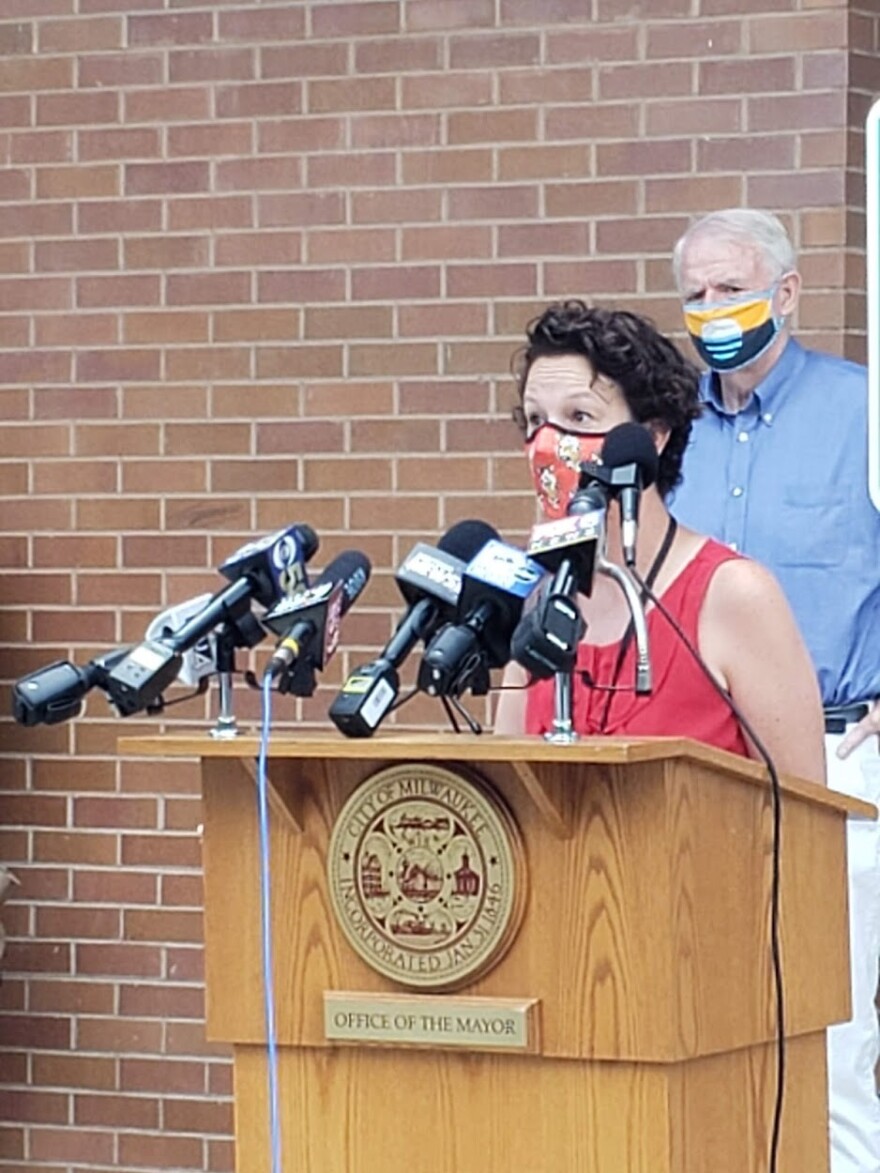On Thursday, Milwaukee will join Shorewood and Dane County in requiring masks to be worn in some outdoor and indoor locations. It's an effort to reduce the spread of COVID-19. But as face masks become more common, experts in speech impediments and hearing loss are asking people to be aware that mask wearing can affect communication.
Meanwhile, engineers and designers are working on potential solutions.
Audiologists who support mask wearing to control COVID-19 say speaking through a mask can reduce the volume of someone's speech between three and 12 decibels, depending on the type of mask. That could be a problem for the 48 million U.S. residents who report they have hearing loss.
Dr. Tricia Ashby-Scabis works with people who are affected. She directs the audiology practice at the American Speech-Language-Hearing Association in Maryland. Ashby-Scabis says masks can also affect the sound of some higher-pitch consonants like s, h, and f.

"If you've got a mask on and that's attenuating, that's dampening, or softening the intensity of the loudness level of speech, and then you're losing some of those high-frequency sounds, that can have a very big impact,” Ashby-Scabis told WUWM.
Ashby-Scabis also says if someone wearing a mask is speaking in a loud room, leading to what she calls a poor signal to noise ratio, that can compound the trouble.
Dr. Erin Donlin is also with the American Speech-Language-Hearing Association. She’s a Wisconsin audiologist mainly working with students. She says the other thing many masks do is block the visual part of speech.
"Much of our communication is visual, and when you're missing half of someone's face, our communication partners are not able to get the entire meaning of the message. So, we might be saying one thing, but our face is showing something different. If you're wearing the mask, the other person isn’t hearing as well,” Donlin said.
Donlin says the mask-wearer simply talking louder usually doesn't help because the speech gets distorted. The audiologists say what does work, is trying to communicate in a quieter room, and trying to exchange more written messages, including by using some new phone apps. The other thing the hearing experts support is more use of masks that are clear around the mouth area.
"Much of our communication is visual, and when you're missing half of someone's face, our communication partners are not able to get the entire meaning of the message." - Erin Donlin
The UW-Madison College Of Engineering is trying out a facial covering hybrid — part plastic shield and part fabric with elastic to cinch up under the jaw and cheeks. Professor Lennon Rodgers directs the UW's Design Innovation Lab. He says what’s called the Badger Shield Plus solves the problem of not seeing the speaker's mouth.
"You can see their face. It's a lot easier to read lips and even as part of voice recognition you can both hear and see at the same time what they're speaking about,” Rodgers said.
Rodgers says his team has yet to do any measurements for decibel loss. But he says as the UW considers having instructors wear the Badger Shield Plus during teaching, there are tests underway with using a microphone or a headset under the face covering.
The UW medical system known as UW Health is already testing the hybrid mask with the Viste family, of Mazomanie. Jessica Viste says her 3-year-old son started speech therapy this year. During a recent session with a therapist who was wearing a mask over her mouth, Viste says the boy had a hard time following the instruction.
"For a w sound, they use a kissy face, and she models the kissy face and that's what he uses to say the w sound appropriately. With a mask that's not possible,” Viste said.
Viste says the therapist now wears Badger Shield Plus. “We had one appointment with that so far, and I think it was awesome,” she said.
As more day care centers reopen, Viste hopes more caregivers can be given masks that allow the mouth to be seen. Otherwise, babies may not see vital facial expressions, and COVID-19 will have more negative impact on learning.
At the urging of the American Speech Language Hearing Association, the federal Centers for Disease Control and Prevention acknowledges cloth masks can make communication more difficult for those who are deaf or hard of hearing. The CDC recommends people try to move to a clearer face covering.
Also, in Wisconsin, a memo to some state employees from the Evers Administration this week says masks may be removed when communicating with someone who is hard of hearing or deaf, and communication cannot be achieved through other means.
Do you have a question about innovation in Wisconsin that you'd like WUWM's Chuck Quirmbach to explore? Submit it below.
_






